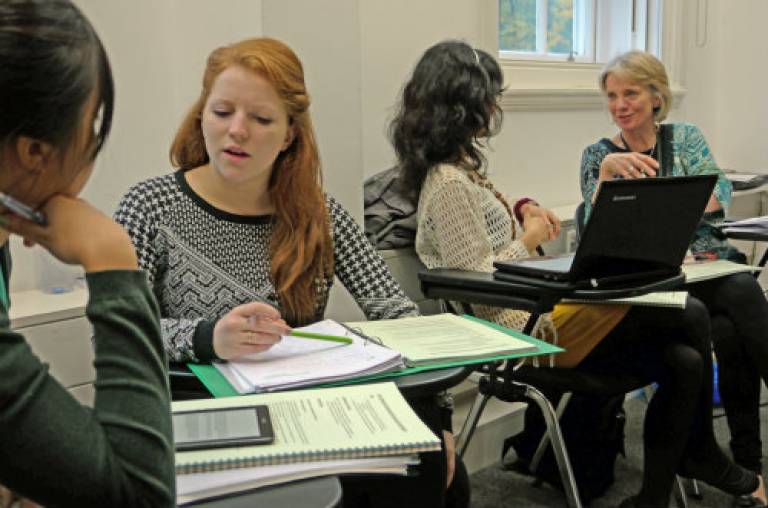Helping students to understand plagiarism
Nicole Brown and Rosalind Janssen (UCL Institute of Education) have created an interactive three hour workshop. They explain what it involves.

27 April 2016
The workshop aims to explore what plagiarism is, what the consequences are and how students can test their own work before submission.
Speaking at the UCL Teaching and Learning Conference 2016, the team explained how the workshop encourages students to think about different types of plagiarism, including self-plagiarism and collusion, and how they might be committed. The session also aimed to make students fully aware of the necessity for and rules of good referencing.
Using Turnitin to check similarity
During the session, students were asked to consider a similarity report from Turnitin (a system which shows how much of an essay submitted via Moodle is similar to other sources stored within the system).
The task was designed to get students thinking about what the percentage similarity actually meant and why plagiarism detection was a matter of academic judgment and the result score was not used in isolation as proof that plagiarism had taken place.
The students were also given an exercise where they were asked to summarise a short piece about Jeremy Bentham, whilst avoiding plagiarism. They were then asked about the method they had used to achieve this.
Moodle to test submissions
Students were also shown the Moodle tool which allows them to submit a test of their work via Turnitin prior to submission.
The documents uploaded to this test page are not stored in Turnitin and so are not used to check against when the student submits the final version.
Students taking responsibility for their own integrity
Rosalind Janssen said: “At the crux of our session we task our students with the formulation of integrity codes. By taking full ownership of their conduct we are engaging them as partners in their education. This in turn improves the experiences of both students and staff.”
Students were then asked to write their own integrity codes based around reasons for not plagiarising and to take ownership of their code by understanding how it is about more than just signing a piece of paper to say ‘I have not plagiarised’.
Evaluation is on-going but many students found they gained a better understanding of what plagiarism was and how to avoid it. Looking forward, the team are considering making videos talking about plagiarism to host on a web page in conjunction with UCL IOE IT to help staff to read and interpret Turnitin reports.
If you would like Nicole and Rosalind to deliver this workshop to your students or teach you how to deliver this workshop, get in touch via email: nicole.brown@ucl.ac.uk or r.janssen@ioe.ac.uk
 Close
Close

